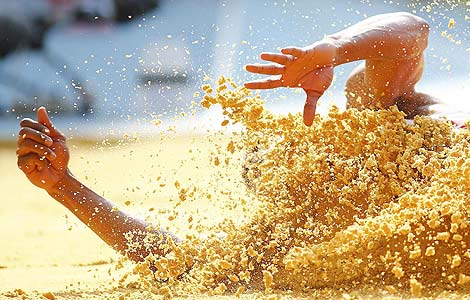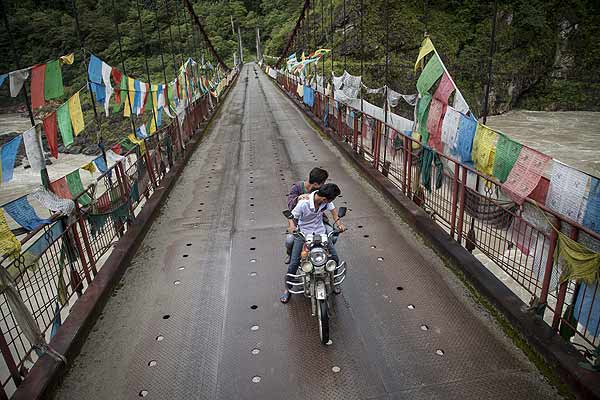Contemporary artist not giving up 'independence'
Updated: 2013-08-15 23:17
By Lin Qi (China Daily)
|
||||||||
Holding a red, big appointment diploma, Fang Lijun poses with his signature childlike smile upon journalists' requests, an image which looks quite similar to the recurring subject- a shaven-headed ruffian- in his many paintings.
The pioneer of contemporary Chinese artist came under the spotlight on Wednesday to declaim his new capacity as director of a contemporary art research center under the China National Academy of Chinese Painting.
The news, which first spread online on Tuesday, have aroused more doubts than applause, as Fang once said he wanted to live as spontaneously and freely as a dingo and an artist should be like "a wild animal". Observers speculate if Fang, a representative of Cynical Realism art movement, was giving away some of his independence as an artist for a secured position in the official system, as he reaches the age of 50 this year.
"No single artist can work in a burrow, or a place where no one gets to see his creation. On my way to the academy, I read the tweets and postings that questioned me. All these doubts act as motivation for my work," Fang says after the appointment ceremony. He adds that he was under even greater social pressure living as a vagrant painter in the Yuanmingyuan Artists' Village in the early stage of his career.
"Creativity doesn't come out of nothing, and inspirations are derived from all sorts of life problems. If one feels too relaxed and happy, he will be in lack of nutrition for creating," he says. "For me, the word 'independence' means doing something I want, rather than what others want me to do, even when sometimes it isn't right in people's eyes. "
Fang, whose exhibition is now underway at the Venice Biennale, is currently preparing for his solo show.
The commission comes as nothing new for Fang, who is also a member of the contemporary Chinese art department, which was founded by the Chinese National Academy of Arts in 2009. His fellow colleagues include three of the four powers of China's contemporary art scene: Zhang Xiaogang, Wang Guangyi and Yue Minjun. There he advises on publishing, promoting and curating exhibitions.
Fang says supporting contemporary artists will be one of his duties at the contemporary art research center. He believes the academy will serve as an important platform, where artists can reach out to as many viewers as possible and their works generate profound public influence.
The academy's head Yang Xiao-yang says the establishment of the center marks a significant moment in the academy's history. "It means that we, as a government-sponsored institute, have to face up to the status quo of contemporary art and its fruits over the past two to three decades."
He says by opening the center, the academy seeks to enrich academic studies of contemporary art and reflect on the present and future of Chinese fine art.

 'Despicable' minions upset Depp's 'Lone Ranger' at box office
'Despicable' minions upset Depp's 'Lone Ranger' at box office
 'Taken 2' grabs movie box office crown
'Taken 2' grabs movie box office crown
 Rihanna's 'Diamonds' tops UK pop chart
Rihanna's 'Diamonds' tops UK pop chart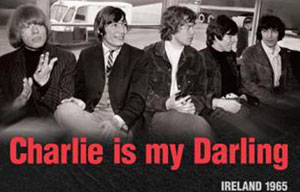
 Fans get look at vintage Rolling Stones
Fans get look at vintage Rolling Stones
 Celebrities attend Power of Women event
Celebrities attend Power of Women event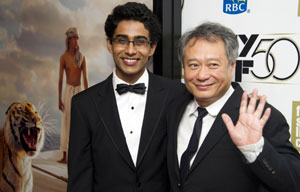
 Ang Lee breaks 'every rule' to make unlikely new Life of Pi film
Ang Lee breaks 'every rule' to make unlikely new Life of Pi film
 Rihanna almost thrown out of nightclub
Rihanna almost thrown out of nightclub
 'Dark Knight' wins weekend box office
'Dark Knight' wins weekend box office
Most Viewed
Editor's Picks

|

|

|

|
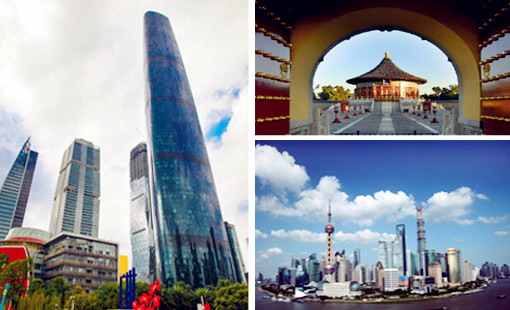
|

|
Today's Top News
Havana seeks help to free 4 Cubans detained in US
Doctors took advantage of Michael Jackson
China lodges complaint over shrine visit
Vietnam opposes US shrimp anti-subsidy decision
China to launch fresh pharm bribery probe
US asks China's help on DPRK issues
Movie tax flack is settled
Manning 'sorry' for US secrets breach
US Weekly

|

|


